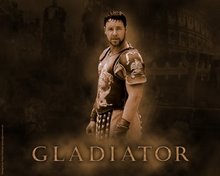The initials ERP originated as an extension of MRP(material requirements planning, and thenmanufacturing resource planning) and CIM (computer-integrated manufacturing) and was introduced by research and analysis firm Gartner. ERP systems now attempt to cover all basic functions of an enterprise, regardless of the organization's business or charter. Non-manufacturing businesses, non-profit organizations and governments now all use ERP systems.
To be considered an ERP system, a software package must provide the function of at least two systems.
For example, a software package that provides both payroll and accounting functions could technically be considered an ERP software package.
However, the term is typically reserved for larger, more broadly based applications. The introduction of an ERP system to replace two or more independent applications eliminates the need for external interfaces previously required between systems, and provides additional benefits ranging from standardization and lower maintenance (one system instead of two or more) to easier and/or greater reporting capabilities (as all data is typically kept in one database).
Examples of modules in an ERP which formerly would have been stand-alone applications include:
Customer Relationship Management (CRM),
Human Resources, Warehouse Management and
Most of the ERP Software Packages have multiple modules and when new modules or Additional Functionalities are required by the client, the Software Providers can offer these optional upgrades as required.
Let us consider a Scenario, A Company has a ERP Software to monitor all the operations in their Corporate Office, Branch Offices and Factory but they want a new module to monitor and find out the actual time taken for Transportation of Raw Materials from Warehouse to Factory, Hence they request for a New Module, With which they can Monitor the Average time taken.
Now, The new module is designed in such a way that Whenever a Material Request Form is raised from the Factory, The Software Generates a Order Form From the Factory (Production Manager to Make the Request and General Manager to Authorize the Request), which will be Electronically transfered to the Central Server and a Copy of the same is delivered at the WareHouse.
The Warehouse Manager authorizes the Goods Transfer and generates a Goods Transfer Note from Factory and enters the exact time when the container leaves the factory, the GTN is electronically transfered to the Central server and the Factory and Once when the container reaches there, the Store Keeper, Enters the Goods Receipt Note and Will Key in the Actual Delivery time and this document will also be saved and Electronically sent to The central Server which will calculate the total time taken and after some "N" times of Observation the Management may take the appropriate action to either speedup the Delivery or alternate methods to save time.
Thus These are the Options available to Customize according to the Needs of the End User

No comments:
Post a Comment